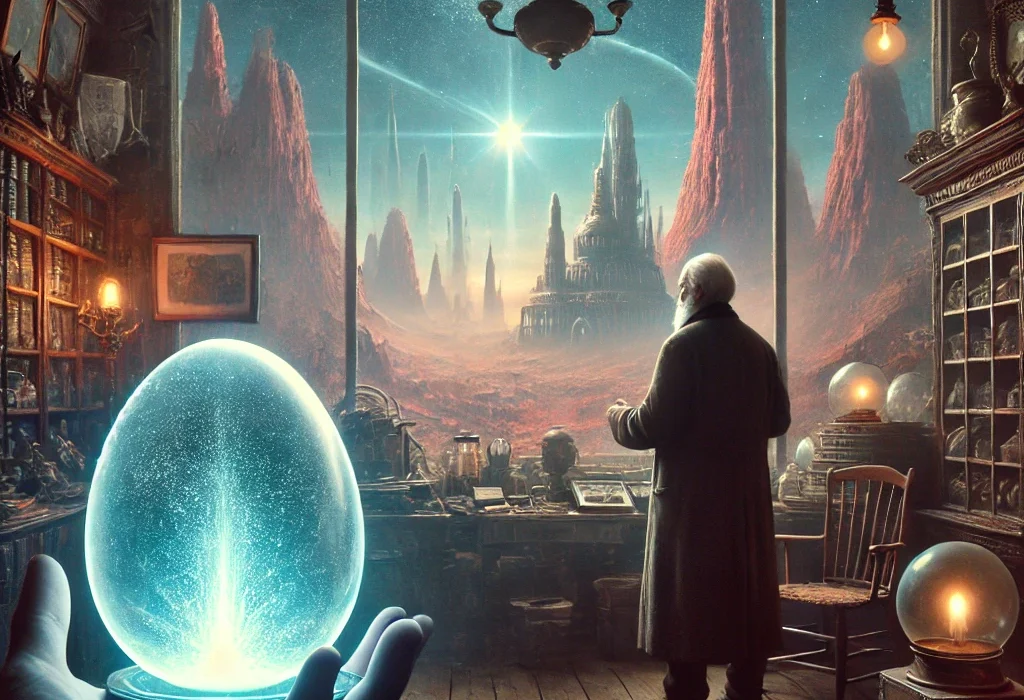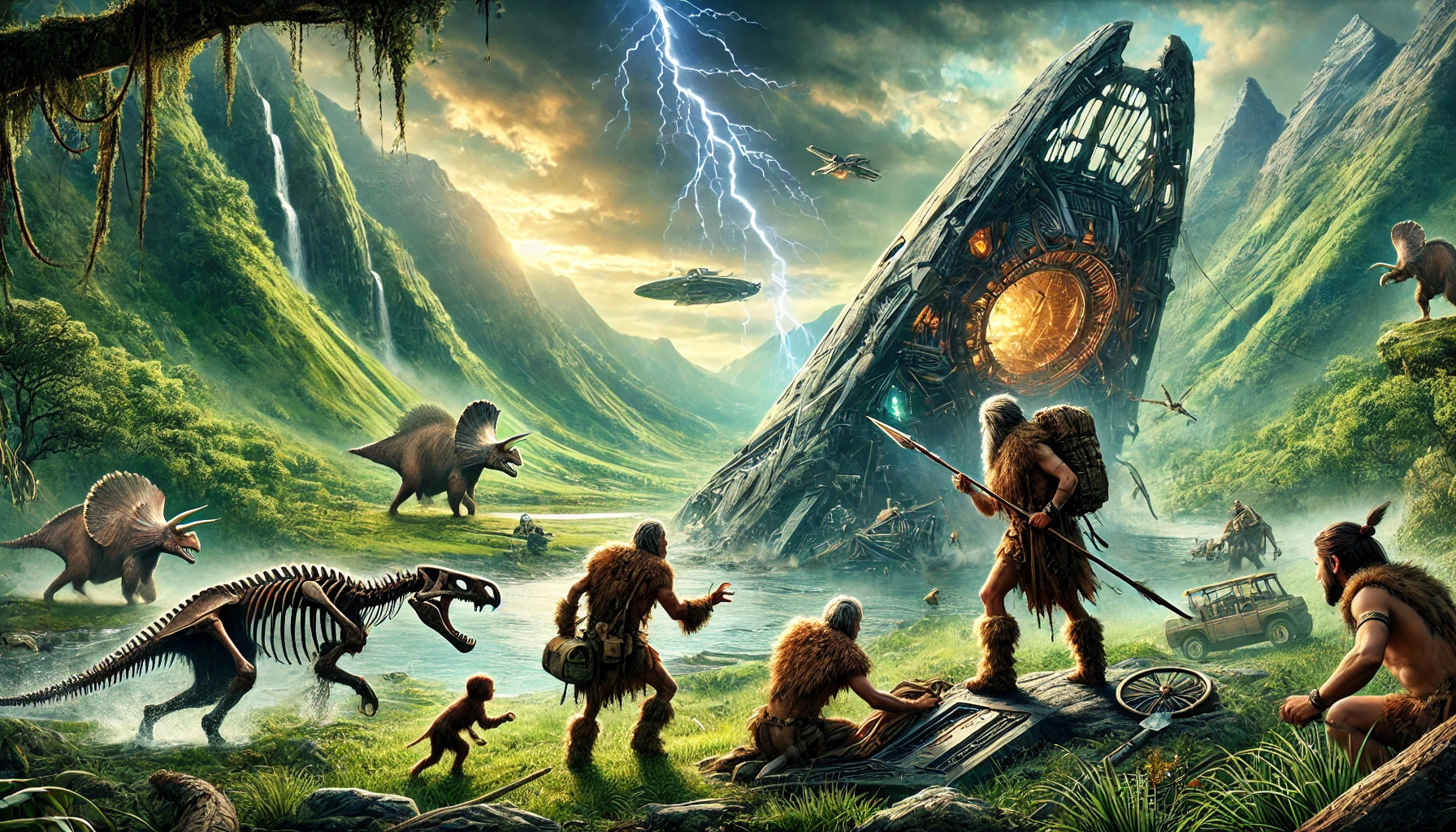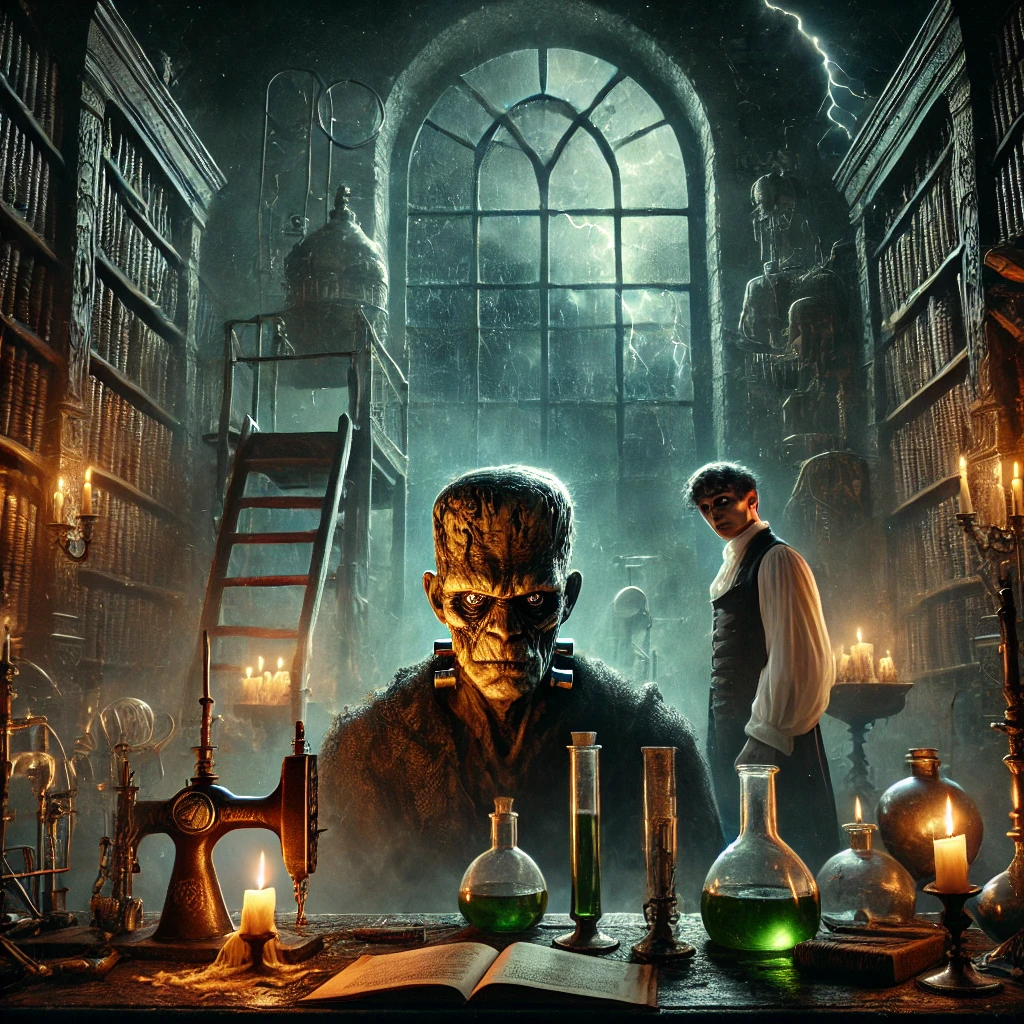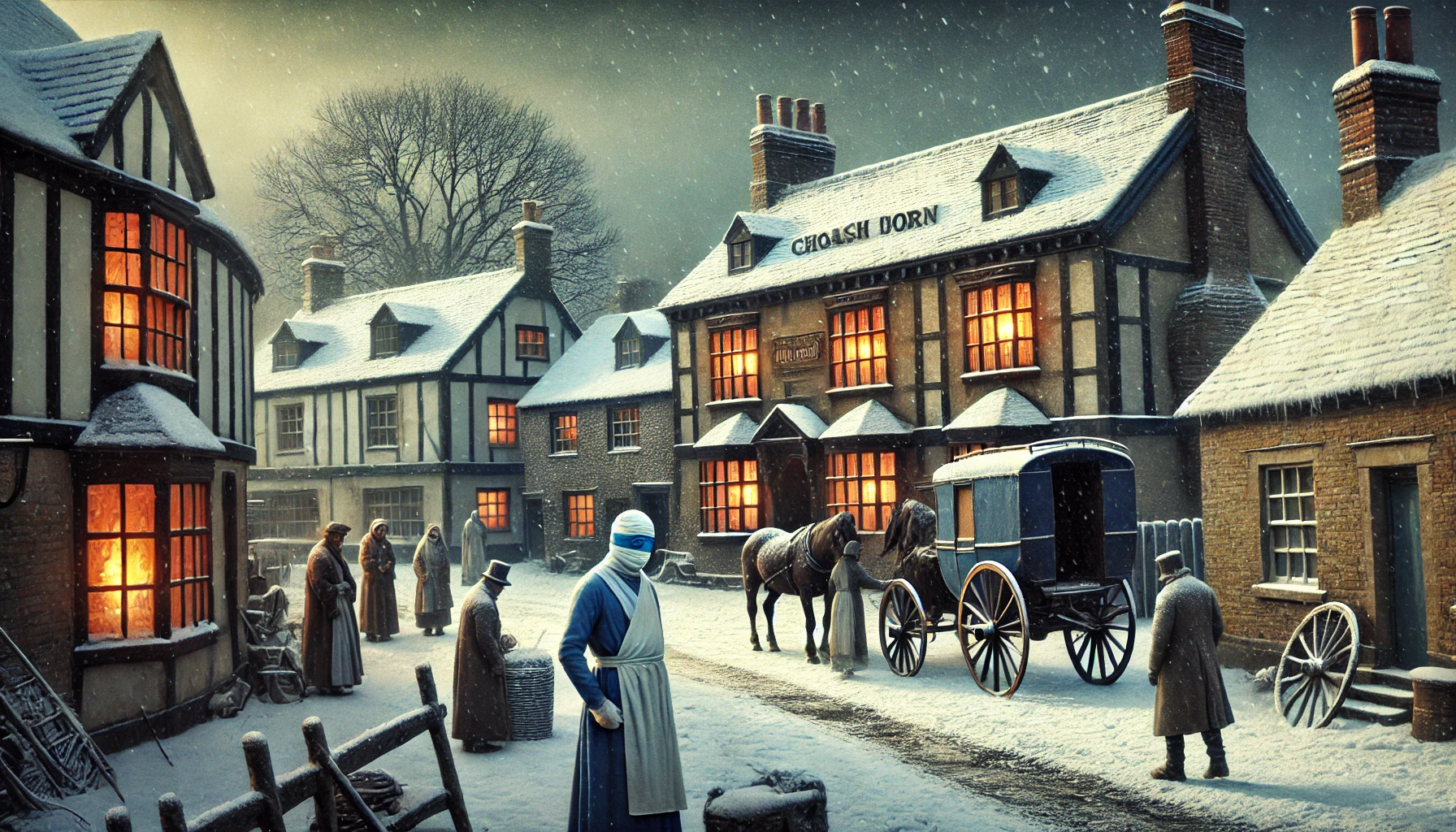Tales of Space and Time is a collection of short stories by H.G. Wells, published in 1900. Known as one of the pioneers of science fiction, Wells presents a variety of tales that explore human nature, scientific curiosity, and the potential consequences of technological advancements. Set in different times and places, these stories reflect Wells’ imaginative and speculative style, often delving into the unknown and the mysterious. Through vivid storytelling and profound themes, Wells invites readers to ponder the limitless possibilities and inherent dangers of human endeavors.
Plot Summary
The Crystal Egg
There was, until a year ago, a small, dusty shop near Seven Dials, where the name “C. Cave, Naturalist and Dealer in Antiquities,” could barely be read on a weather-worn sign. Inside, Mr. Cave, an elderly man with pale, watery blue eyes and a frail frame, managed a collection of curious items: elephant tusks, chessmen, beads, skulls, and various other oddities. Among these items was a polished crystal egg that caught the attention of two peculiar customers—a tall, thin clergyman and a dusky, black-bearded young man.
Mr. Cave, anxious about the crystal, initially asked five pounds for it, a price much higher than he had intended. A bargaining ensued, interrupted by Mrs. Cave, a corpulent woman with a coarse face, who insisted that five pounds was a fair price. Despite her interference, Mr. Cave remained stubborn, citing an interested buyer. The customers left, promising to return.
That evening, a tense discussion unfolded at supper. Mrs. Cave, their step-children, and Mr. Cave argued over his reluctance to sell the crystal. Feeling cornered, Mr. Cave retreated to his shop, where he often stayed late into the night. Unknown to his family, he had discovered that the crystal revealed extraordinary visions.
One night, while peering into the crystal under a streak of dawn light, Mr. Cave saw a scene that defied explanation. The crystal seemed to contain a moving picture of a vast plain bordered by reddish cliffs, with towering structures and peculiar, bird-like creatures. Fascinated, he realized that the crystal acted as a window into another world—a world that might be Mars.
Mr. Cave shared his secret with Mr. Wace, an assistant demonstrator at St. Catherine’s Hospital. Intrigued, Mr. Wace began to study the crystal with Mr. Cave, noting the phosphorescent glow and the consistent visions of the Martian landscape. They observed enormous buildings without doors, bird-like creatures with tentacles, and mysterious masts topped with crystals similar to the one in Mr. Cave’s possession. These observations suggested that the crystals were somehow connected, serving as a two-way portal between Earth and Mars.
As their research progressed, Mr. Cave’s health deteriorated. The stress of hiding the crystal from his family and the late-night sessions took a toll on his frail body. One night, he was found dead in his shop, the crystal clasped in his cold hands, a peaceful smile on his face. His widow, unaware of the crystal’s significance, sold it to a stranger, ending Mr. Wace’s investigations and leaving the crystal’s fate unknown.
The Star
On the first day of the new year, astronomers announced that the planet Neptune had become erratic in its movement. Soon after, a faint speck of light was discovered, rapidly growing larger and brighter. This new celestial body, a massive star, collided with Neptune, creating a brilliant new star in the sky.
As the star approached Earth, its effects became increasingly severe. The heat from the star melted ice caps, causing massive floods, while earthquakes and volcanic eruptions shook the planet. Despite warnings from scientists, many people remained skeptical until the catastrophic events became undeniable. The once-cold winters turned into unbearable heat, forcing people to seek refuge.
The star continued to draw closer, its brightness turning night into day. Panic spread as natural disasters intensified. Rivers overflowed, drowning cities, and tidal waves swept across coastlines. The star’s gravitational pull disrupted Earth’s orbit, increasing temperatures and causing widespread destruction.
In a small village, people gathered to pray, seeking solace in their faith. Across the world, similar scenes of desperation unfolded. Despite the chaos, human resilience shone through as people helped each other survive. Finally, at its closest approach, the star’s path began to shift, pulled by Jupiter’s immense gravity.
The star passed by Earth, gradually receding into the depths of space. The planet slowly began to recover from the devastation. On Mars, astronomers observed the events with detached curiosity, noting the minimal long-term damage to Earth. The star became a distant memory, a testament to the fragility and resilience of life on Earth.
A Story of the Stone Age
Fifty thousand years ago, in a time before recorded history, the land that would become the North Sea was a broad, marshy plain. In this prehistoric world, Ugh-lomi and Eudena, members of a primitive tribe, found themselves outcasts. Ugh-lomi, having killed the tribe’s leader Uya in self-defense, fled into the wilderness with Eudena, who loved him.
The couple faced numerous challenges in their new life. They encountered wild animals, harsh weather, and the constant threat of pursuit by Uya’s clan. Despite these dangers, Ugh-lomi’s ingenuity and resourcefulness helped them survive. He crafted tools and weapons, gradually improving their chances against the elements and predators.
One day, while exploring, Ugh-lomi discovered a cave that provided shelter. Inside, he found the bones of an ancient creature, which inspired him to create better weapons. With these new tools, he and Eudena hunted more effectively, ensuring their survival through the harsh seasons.
Their life was not without its trials. They faced attacks from wild animals and had to defend their territory from other tribes. Yet, through it all, their bond grew stronger. Ugh-lomi’s innovations began to change their way of life, marking the dawn of a new era in human evolution.
In time, Ugh-lomi and Eudena’s story became a legend among their people. Their descendants spread their knowledge and tools, transforming the primitive society. The couple’s legacy lived on, a testament to human resilience and the power of innovation.
The Man Who Could Work Miracles
George McWhirter Fotheringay, an unassuming clerk, discovered he had the power to perform miracles. At first, he was skeptical, but a series of small, successful experiments convinced him of his abilities. With a simple command, he could alter reality, defying the laws of nature.
Fotheringay’s newfound powers quickly drew attention. He performed increasingly grandiose miracles, from making objects disappear to altering the landscape. However, his actions often had unintended consequences, causing chaos and confusion.
As Fotheringay’s confidence grew, so did his recklessness. He began to meddle with larger and more complex systems, disrupting the natural order. Realizing the potential for catastrophe, he sought advice from a local vicar. The vicar warned him about the ethical implications of his powers and the dangers of playing god.
In a final, desperate act to prevent further disasters, Fotheringay decided to undo all his miracles. He willed the world back to its original state, relinquishing his powers. In the end, he concluded that humans were not meant to wield such extraordinary abilities, recognizing the importance of humility and responsibility.
The Valley of Spiders
In a remote valley, three adventurers—strong and determined—encountered a terrifying swarm of giant spiders. The spiders, driven by an unknown force, moved in perfect unison, creating a living tide of death. Initially unaware of the danger, the men soon realized the peril they faced.
As the spiders closed in, the adventurers used their wits and physical prowess to navigate the treacherous terrain. They climbed cliffs, crossed rivers, and set traps to slow the advancing swarm. Despite their efforts, the spiders’ relentless pursuit and the harsh environment took their toll.
The leader of the group, a resourceful and brave man, devised a plan to escape the valley. He led his companions through a narrow pass, hoping to outmaneuver the spiders. The journey was fraught with danger, and they faced numerous obstacles. One of the adventurers, driven by fear and exhaustion, fell behind and was consumed by the spiders.
The remaining two pressed on, their determination unwavering. They reached the edge of the valley, where they found a narrow ledge leading to safety. As they climbed, the spiders swarmed below, unable to follow. The men emerged from the valley, scarred and weary but alive.
Their harrowing experience in the Valley of Spiders became a legend, a tale of survival against overwhelming odds. The adventure highlighted the thin line between life and death and the unyielding will to persevere in the face of danger.
Main Characters
Mr. Cave – A humble, elderly shopkeeper who discovers the mysterious crystal egg. He is characterized by his curiosity and secretive nature, which ultimately leads to his untimely death. His fascination with the crystal reveals a hidden passion for the unknown.
Mr. Wace – An Assistant Demonstrator at St. Catherine’s Hospital who becomes Mr. Cave’s confidant and collaborator. His scientific approach and rational mind contrast with Mr. Cave’s emotional and superstitious tendencies.
George McWhirter Fotheringay – The protagonist of “The Man Who Could Work Miracles.” He is an ordinary clerk who discovers his ability to perform miracles. His character arc revolves around the ethical implications and unintended consequences of wielding such power.
Ugh-lomi – A resourceful and inventive member of a primitive tribe in “A Story of the Stone Age.” His survival skills and innovative thinking drive the narrative as he faces various challenges in the prehistoric world.
Eudena – Ugh-lomi’s companion and love interest. She supports him throughout their trials and embodies resilience and adaptability in the face of danger.
The Adventurers – In “The Valley of Spiders,” these three unnamed men represent courage and determination as they battle against the deadly swarm of spiders. Their struggle highlights the themes of survival and human tenacity.
Theme
Curiosity and Exploration – Central to many of the stories, the theme of curiosity drives characters like Mr. Cave and Mr. Wace to explore the unknown. Their investigations often lead to profound discoveries and significant consequences.
Power and Responsibility – Fotheringay’s story in “The Man Who Could Work Miracles” examines the ethical implications of having immense power. It underscores the importance of responsible use of abilities and the potential for disaster when power is misused.
Survival and Adaptation – In “A Story of the Stone Age,” Ugh-lomi and Eudena’s journey highlights human resilience and the ability to adapt to changing environments. This theme is also evident in “The Valley of Spiders,” where the adventurers’ struggle for survival against natural threats is portrayed.
Scientific Inquiry – The stories often reflect Wells’ interest in science and its impact on society. Characters engage in scientific inquiry, leading to discoveries that challenge their understanding of the world.
Human Nature – Wells delves into the complexities of human nature, including ambition, fear, love, and conflict. His characters’ actions and decisions reveal the multifaceted aspects of humanity.
Writing Style and Tone
H.G. Wells’ writing style in “Tales of Space and Time” is marked by a blend of vivid description, imaginative scenarios, and a touch of philosophical inquiry. He employs a narrative technique that combines detailed exposition with engaging dialogue, making complex scientific ideas accessible to readers. His prose is both clear and evocative, capturing the wonder and mystery of the unknown.
The tone of the stories varies from wonder and curiosity to tension and foreboding. In “The Crystal Egg,” the tone is one of fascination mixed with a sense of impending doom. “The Star” carries a tone of apocalyptic dread, while “A Story of the Stone Age” offers a more adventurous and survivalist atmosphere. “The Man Who Could Work Miracles” balances humor with a moralistic undertone, and “The Valley of Spiders” maintains a suspenseful and eerie mood throughout.
Wells’ ability to shift tone and style to suit the narrative context demonstrates his versatility as a writer and his skill in crafting stories that resonate on multiple levels. His works continue to captivate readers with their imaginative scope and profound insights into the human condition.
We hope this summary has sparked your interest and would appreciate you following Celsius 233 on social media:
There’s a treasure trove of other fascinating book summaries waiting for you. Check out our collection of stories that inspire, thrill, and provoke thought, just like this one by checking out the Book Shelf or the Library
Remember, while our summaries capture the essence, they can never replace the full experience of reading the book. If this summary intrigued you, consider diving into the complete story – buy the book and immerse yourself in the author’s original work.
If you want to request a book summary, click here.
When Saurabh is not working/watching football/reading books/traveling, you can reach him via Twitter/X, LinkedIn, or Threads
Restart reading!








